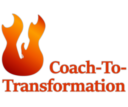

My first tryst with Coaching
- Aug 31st 2020
Blog authored by Sandhya George
Over the course of my career, I have had exposure to different terminologies that were used interchangeably with coaching. I decided to step into the world of coaching to explore and understand if it will make a difference to myself or to my interactions with the people I work or interact with daily. There was also an added factor that this could help me in my professional life in the future.I have started the journey. Yes, it is a journey of self-exploration, self-restraint, mind & emotion control, language nuances and communication structures. The key is in the way you communicate, how you communicate without imposing your judgment, individual biases, and solutions onto the individual. This will take a major mind shift for me as an individual especially considering my personality.
My experience in my first practice session was quite an eye-opener. Let me try and list them out.
Firstly, I tried to focus on the individual, but many times, I wanted to get into solutioning. This was not the aim of the discussion. The individual was confused and simply needed someone to hear him out. The individual is an adult and quite capable to come out with conclusions on his own.
Secondly, I was approaching him assuming I am in a “Teacher-student” relationship. Instead, I need to change my mind to the fact that there are 2 equals in the room. It required a change in my approach to discussions. The individual opposite you is more important than yourself. Anything that you do has to be for the individual sitting opposite you.
Thirdly, my aim should have been to ask the right questions, so that the individual could explore his thoughts on his own. I was too focused on driving the individual towards an appropriate solution. My questions started bordering on giving solutions. Additionally, I was asking him close-ended questions which did not give the individual the options to explore his emotions.
Fourthly, listening is a very important component of the discussion. You need to apply the 80:20 rule, where the coach has to do only 20% of the talking. You need to listen to how what and why the individual is communicating the way he does. In most discussions, people do not focus on this aspect. This could lead to a different area for exploration, which can give a lot of clarity to the individual.
Lastly, silence can be used as a tool. It literally makes the individual think further rather than only answering the questions being asked. It puts pressure on him to think through his responses, explore more options which he would not have thought otherwise. In my specific practice session, the individual was at a loss of words. If I had allowed him to think further, he would have come out with further inputs. Additionally, I realized, that having someone to talk to frankly can also clarify the position and confusion in the individual’s mind.
I have started trying to incorporate the basic principles into most of my discussions. But it will take practice and self-control to be considered reasonably proficient. I have started the journey and there is no end destination currently, but there are surely going to be milestones /checkpoints along the way as I do know that it is an ongoing journey and I will become better over time.


Rajat Garg
Rajat is a Master Certified Coach (MCC) with over 18 years of industry experience and over 2500 hours of coaching experience, helping people and organizations attain maximum effectiveness. His background includes working with CXOs, senior managers, managers and board of directors of small private companies to multi-billion dollar publicly traded organizations.









0